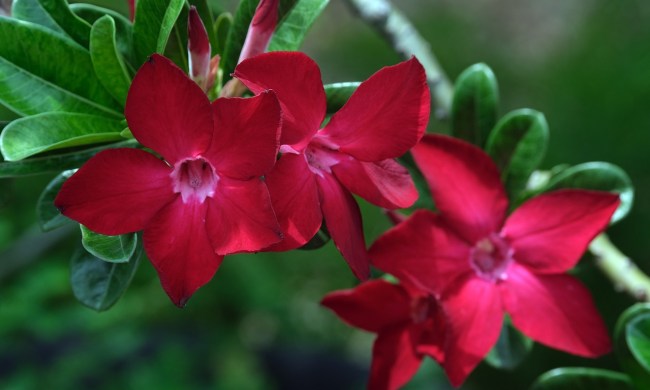Houseplants are a popular way to liven up indoor spaces with relaxing greenery or brightly colored flowers. Indoor palm trees are particularly popular, as they can create a tropical atmosphere while still being fairly low-maintenance plants. Areca palms, also called butterfly palms, yellow palms, and golden cane palms, are one such palm. With graceful curving leaves and lovely yellow flowers, it’s no wonder so many people want to bring one of these plants home. Here’s what you need to know to grow your own areca palm.
Which areca palm should you grow?

First things first — there are actually two different plants called areca palms. If you’re buying your tree in person, you can be fairly sure you’re getting the correct one, as the other areca palm is not a common houseplant. However, if you plan on getting your new houseplant online, you should be aware of the differences between these related plants.
The areca palm commonly grown as a houseplant is either Chrysalidocarpus lutescens or Dypsis lutescens, with both names referring to the same plant. It’s native to Madagascar, and it has multiple canes. The other areca palm is Areca catechu, also called betel palm, and it is native to the Philippines. Although related, this areca palm has only a single cane, and is typically not grown as a houseplant. This is primarily because Areca catechu has nuts that are both toxic and addictive.
Planting areca palms

Areca palms can grow outdoors in zones 10 and 11, but they’re more commonly kept indoors. As tropical plants, they need to be warm, so keep them away from drafts or air conditioning vents. Plant your areca palm in well-draining soil. If possible, using a soil blend created for palm trees is ideal. The container should be slightly larger than the roots of the plant and should have plenty of drainage holes to allow excess water to pass through.
Areca palms can be planted in full sun to partial or dappled shade. More sunlight is typically better for these tropical palm trees, so place them by your sunniest window. To keep your palm tree looking lush all the way around, you can rotate the pot every few months, ensuring that each side gets plenty of sunlight.
Areca palm care

Water your areca palm regularly, so that the soil is consistently moist but not soggy. When established, areca palms are fairly drought tolerant, but a lack of water will lead to dry, discolored leaves over time. Although areca palms appreciate some humidity, they do not need it to be particularly high. If you prefer to keep your home more dry, your areca palm may benefit from a light misting or a shallow tray of rocks and water nearby to keep the humidity around it a bit higher. Reduce watering slightly during fall and winter.
Fertilizer is important for indoor plants since the soil cannot replenish itself naturally. Areca palms are not picky about fertilizer type, so choose any balanced or palm-specific fertilizer. Either regular applications of liquid fertilizer or a single application of a slow-release fertilizer will work. Fertilize them only in spring and summer, not fall or winter.
Areca palms don’t need to be pruned, and dry leaves or fronds will typically fall on their own. You can remove damaged or dying fronds yourself to keep the plant looking neat if you prefer. Areca palms do not need frequent repotting either, but they can benefit from repotting every few years.
Pests and problems

Luckily, areca palms are generally healthy and not susceptible to most diseases. If they are potted in poorly draining soil or a container without drainage holes, soggy soil can lead to fungal infections such as root rot. However, this is easy to avoid by potting them correctly and managing the amount of water they get.
Common indoor pests such as spider mites and whiteflies can be a minor issue for areca palms, but the damage is rarely serious. Insecticidal soap, neem oil, and dusting the plant’s leaves with a dry washcloth can help keep these nuisances at bay. Outdoor areca palms grown in Florida or surrounding states can become the target of planthoppers. These insects can spread a disease called lethal yellowing, which affects most palm trees, turning the leaves yellow and killing the tree.
Why isn’t my areca palm blooming?

Areca palms grow long clusters of tiny yellow flowers, and they are quite lovely to see. However, they rarely appear indoors. This is generally due to how different indoor environments are from their native environments. While areca palms are fairly easy to keep alive and healthy indoors, encouraging them to bloom can be tricky for some homeowners. Proper care is the best way to increase your chances of seeing areca flowers. Temperature, lighting, and nutrients are the most common causes of an areca palm not blooming. Keep it warm, be sure it has plenty of sunlight, and fertilize it regularly.
Areca palms are lovely and easy to grow, and now you’re ready to bring one into your home. Whether you’re an experienced gardener who has grown plenty of palm trees or this is your first one, you’re sure to find growing an areca palm an easy and stress-free experience. If you’re lucky, you may even see their delightful yellow flowers!




